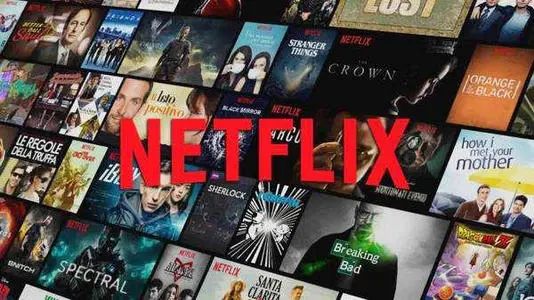Net profit of $2.36 billion, is Netflix looking for a 'second spring'?
![]() 10/21 2024
10/21 2024
![]() 571
571

Produced by | Yiguan Finance
Author | Xuanye Baixue
Recently, global streaming giant Netflix (DIS.US) released its third-quarter earnings report for fiscal year 2024.
The report shows that in Q3 FY2024, Netflix's revenue increased by 15% year-on-year to $9.825 billion, with a growth rate lower than the 17% in Q2; net profit increased by 41% year-on-year to $2.364 billion, lower than the 44.3% growth rate in Q2.
Netflix now firmly holds the top spot in the global streaming market, but competition in the streaming industry is fierce, with traditional giants like Disney and Paramount Global, as well as new players like Amazon and Apple, vigorously competing for market share. Netflix's high position is not necessarily secure.
Challenges facing Netflix
In summary, Netflix faces a series of challenges in user growth, market competition, content innovation, international expansion, and technological innovation. To address these challenges, Netflix needs to continuously innovate and adjust its strategies to maintain its leading position in the streaming market.
1. Netflix's user growth is beginning to plateau, which is one of its biggest risks.
Netflix previously stated that it would stop reporting user data starting in 2025 and instead focus on profitability and sustainability. However, whether from the perspective of profitability or sustainability, net user additions remain a core metric for measuring Netflix's performance.
Data shows that net subscriber additions in Q3 were 5.07 million, lower than the 8.05 million in the previous quarter, representing a decrease of nearly 3 million quarter-on-quarter. Netflix's paid subscriber growth in the US and Canada fell short of expectations in Q3, with the Asia-Pacific region becoming the main driver of user growth. Overall, Netflix's user growth is attributed to cracking down on password sharing and the launch of advertising tiers. The company disclosed that advertising tier subscribers increased by 35% quarter-on-quarter in Q3, compared to 34% in the previous quarter.
In May of this year, Netflix disclosed that it had 40 million subscribers on its advertising tier, roughly translating to around 70 million advertising subscribers. Netflix previously estimated that approximately 100 million users worldwide share passwords, suggesting that this figure may represent an upper limit for Netflix's future user growth.
Notably, according to Sensor Tower data compiled by Bank of America, Netflix's daily active users (DAUs) showed negative growth in Q3, with a quarter-on-quarter decline of approximately -(2-3)% and a year-on-year decline of approximately -11%. In fact, Netflix experienced negative DAU growth for all three months of Q3, a situation unseen since late 2021: DAUs declined by -2% in July, -2% in August, and -3% in September.
2. Facing fierce competition from giants like Disney+, Amazon Prime Video, and Apple
Netflix faces pressure from multiple powerful competitors, including cable TV, YouTube, Disney+, and Amazon Prime Video. These competitors not only invest heavily in original content production but also pose challenges to Netflix in terms of user base and market penetration.
According to Disney's Q3 financial report, Disney+ core subscribers (excluding Disney+ Hotstar users in India and other countries in the region) grew by 1% to 118.3 million. Among them, Disney+ subscribers in the US and Canada increased by nearly 1 million to a total of 54.8 million. Hulu's total subscribers also increased from 50.2 million in the previous quarter to 51.1 million. Disney expects modest growth in Disney Core+ subscribers in Q4.
Additionally, Disney reported that its streaming business achieved a profit of $47 million, the first time since the flagship Disney+ streaming service launched in 2019. This includes profits from Hulu and ESPN+.
It is worth noting that the profitability of streaming businesses for both Netflix and Disney+ is driven by price increases and subscriber growth. Compared to competitors like Disney+, Netflix's comparable value faces declines. In 2023, prices for basic and premium plans increased by $2-$3, with the premium plan now costing $22.99 per month. Meanwhile, competitors like Disney+ and Max offer similar services at lower costs: Disney+ costs $7.99 per month with ads or $13.99 per month without ads, while Max offers an ad-supported plan for $9.99 per month and an ad-free plan for $15.99 per month.
Disney also plans to attract and retain subscribers through new content, including ABC News Live and playlists designed for preschoolers, which became available to all subscribers starting September 4. Disney also plans to introduce four additional curated playlists for premium subscribers.
3. Content innovation, personalized demand, international expansion, and localization challenges are also areas that Netflix needs to pay attention to.
As its content library continues to expand, Netflix needs to continuously innovate and optimize its content recommendation system to meet users' demands for personalized content. This requires Netflix to continuously invest in content filtering and recommendation algorithms to maintain the freshness and appeal of its content.
Netflix faces localization challenges in its global expansion, requiring it to adapt its content strategy to different regional cultures, languages, and consumption habits. This requires Netflix to maintain its global brand consistency while also flexibly adapting to the unique characteristics of each market.
Theme parks: Netflix seeks new growth offline
When online user growth reaches its ceiling, while price increases can help Netflix boost revenue, this approach is not sustainable in the long run. Retaining and deeply mining existing users is crucial for Netflix's revenue growth.
Netflix has always explored business diversification and is now venturing into the offline theme park business. Netflix announced plans to open two theme parks in 2025. Is the theme park business easy to manage? What advantages does Netflix have in opening offline theme parks? And what challenges does it face?
The theme park business has been growing steadily in recent years. Disney's financial results show that theme park revenue reached $8.383 billion in fiscal Q3 2024, up 2% year-on-year, with an operating profit of $2.2 billion. Theme parks are a "cash cow" for Disney's primary business.
Netflix has several advantages in opening offline theme parks:
1. A vast online user base as a potential source of visitors
According to the latest financial report, Netflix had 282.7 million online subscribers at the end of Q3, providing a natural source of potential visitors for its theme parks. This offers a natural advantage in promotion and marketing, making it easier to convert online users into offline theme park visitors.
2. High-quality content and abundant IP resources
Over the years, Netflix has accumulated numerous popular film and television IPs, such as "Stranger Things," "Bridgerton," and "Squid Game," which have a broad fan base and high recognition. These IPs can provide strong content support and branding for the theme parks, helping to attract large numbers of visitors.
3. Innovative business models
Netflix's theme parks differ from traditional parks like Disney and Universal Studios, focusing more on short-term, flexible entertainment experiences rather than Disney's all-day, immersive experiences.
Netflix plans to build its theme parks within controlled retail spaces in shopping malls, which can reduce upfront construction costs and risks. Furthermore, Netflix's smaller parks will focus more on linking IPs with its existing streaming content, allowing for quick updates based on new episode releases, maintaining visitors' freshness and curiosity, and increasing repeat visits.
4. However, building theme parks in different regions globally poses challenges for Netflix in adapting to cultural differences.
Netflix's content is distributed globally, but cultural differences between regions are significant. When translating online content into offline theme park experiences, adapting to these differences and meeting local visitor needs is a challenge for Netflix.
While Netflix has certain advantages, it also faces significant challenges.
1. Competition from giants like Disney and Universal Studios
Disney and Universal Studios already dominate the market, each with successful models and deep cultural foundations. Netflix needs to establish sufficient brand recognition and differentiation advantages quickly to stand out in the competition.
Disney, a veteran in the theme park industry, boasts numerous classic IPs and rich theme park operation experience. With multiple theme parks worldwide and a profound brand influence, Disney enjoys high visitor loyalty and poses a formidable competition for Netflix.
Universal Studios, centered on film themes, offers unique experiences with renowned IPs and advanced special effects technology. Its positioning shares some similarities with Netflix's theme parks, both emphasizing immersive entertainment experiences. Universal Studios also has a broad visitor base and high recognition globally, competing with Netflix for customers and market share.
In some regions, local theme park operators, such as OCT and Chimelong Group in China, are also highly competitive with multiple well-known theme park brands and deep cultural and resource advantages to better serve local visitors.
2. Lack of theme park operation experience for Netflix
Compared to veterans like Disney and Universal Studios, Netflix lacks experience in theme park operation and management. Theme park operation involves maintaining ride facilities, managing personnel, ensuring safety, and more, requiring a professional team and extensive experience to ensure smooth operations. This may necessitate significant learning and adjustment in the initial stages.
3. Uncertainty about the sustainability of IP influence
While Netflix boasts popular IPs, it is unclear whether their influence will last long-term. Some IPs may be popular for a while, but over time, viewer interest may wane. If Netflix fails to continuously introduce new popular IPs or maintain the heat of existing IPs, it may affect the long-term development of its theme parks.
4. Limited brand recognition in the theme park industry
In the theme park industry, brands like Disney and Universal Studios are deeply ingrained in consumers' minds, enjoying high recognition and loyalty. In contrast, as a streaming brand, Netflix has relatively low brand recognition in the theme park sector, requiring more time and effort to build its brand image and influence.
5. Slowing market demand
Economic factors have reduced consumers' willingness and ability to travel, leading to sluggish growth in theme park visitor numbers and spending. In fiscal Q3 2024, Disney's theme park operating profit declined by 3% year-on-year, and the company expects theme park revenue to remain flat in Q4. The company mentioned in its financial report that consumer demand slowed at the end of fiscal Q3, with similar weakness expected to persist for several quarters.
Whether Netflix's offline theme parks can become a new growth engine for the company remains to be seen, and this may be the "story" Netflix is telling investors.





